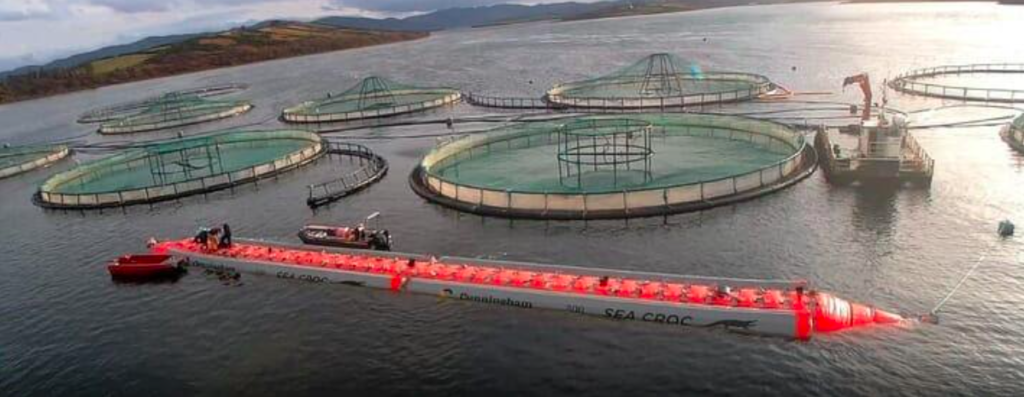The bag has been tested and can safely be towed at speeds of 6 knots. It has multiple anchoring points, several loading and discharge points, 12 independent air chambers for flotation and can be filled in approximately 1 hour. The tow bag has now undergone lengthy field tests, with positive results, showing it is impervious to saltwater ingress over a 6-week period, demonstrated by stable salinity inside the bag.
Desalination
The marine salmonid sector has for a number of years been attempting to overcome difficulties in accessing freshwater of a desired quality to complete required AGD treatments. In response to this challenge, BIM hired a desalination unit for six months so that the efficacy of desalinated water for the treatment of AGD and other health issues could be investigated. This work took place in County Galway in conjunction with the salmon farming industry and on-site support provided by Curraun Fisheries Ltd and Mannin Bay Salmon Company Ltd.
Currently, the preferred treatment for AGD is a three-hour freshwater bath, with a salinity of less than three parts per thousand (ppt). Although the salinity of the freshwater used during these case studies was higher (6.2-7.0 ppt), it was successful in the treatment of AGD. The three-hour treatment with a salinity of 6.2 ppt reduced average AGD gill scores from 3.6 pre-treatment, to 0.4 one-week post-treatment. 87 percent of PCR samples taken one-week post-treatment were negative for Neoparamoeba perurans, the causative agent of the disease. In all three case studies, no amoeba were observed on gill smears taken immediately post-treatment.
However, several gill smears sampled from fish after a treatment time of only three hours had cyst-like circles present, which were possibly pseudocysts formed by amoeba in response to changing salinity. Further investigations are needed around the possible formation and viability of amoebic pseudocyst during and after treatment.
Results from this series of trials showed that the use of desalinated water is extremely successful in the treatment of AGD. An added advantage over naturally sourced freshwater is the lack of suspended solids in the filtered water, which permits the easy maintenance of dissolved oxygen levels throughout the treatment.
This system has also demonstrated great success in the treatment of sea lice. BIM has established that, when detached, over 95 percent of sea lice (Lepeophtheirus spp.) were dead and could not be revived in sea water following a 90-minute treatment in desalinated water. When fish with sea lice (Lepeophtheirus spp.) were treated for five hours in desalinated water, the clearance rate achieved was 85 percent when averaged for all life stages. None of the sea lice that were removed during the freshwater treatment could be revived in saltwater. The above studies have shown that sea lice are effectively removed using desalinated water and that shortly after detachment the sea lice are no longer viable.





